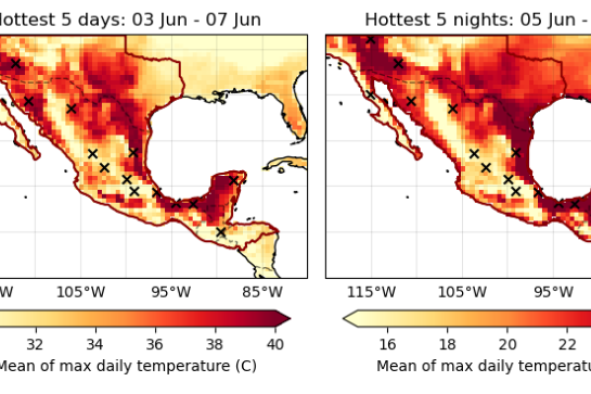A Harvard professor has warned the world is dangerously close to nuclear war at a time when leading experts key to preventing such conflicts are "aging out," pleading with leaders to urgently seek help from a new generation of scientists and engineers.
Matthew Bunn, a professor of energy, national security and foreign policy, said "the risk of nuclear war has not been so high since the Cuban Missile Crisis" in 1962.
"Dark clouds loom on the nuclear horizon, with threats from all directions," he wrote in an editorial for the scientific journal Science, released Thursday. "The world could soon face an unrestrained arms competition for the first time in over five decades—and a more complex one involving more countries and more technologies."
In his editorial, Bunn warned the 2010 New START Treaty is the last remaining agreement limiting U.S. and Russian nuclear forces, but it expires in 2026, with Russia blocking required inspections and no new talks underway.
He pointed to a global landscape that is marked by heightened nuclear tensions, including: Russia's nuclear threats in the Ukraine conflict, China's construction of numerous missile silos, North Korea's missile testing, ongoing nuclear rivalry between India and Pakistan, and Iran's nuclear ambitions.
In response to these events, U.S. policymakers are contemplating a potential nuclear arms buildup. Additionally, advancements in technologies like hypersonic missiles and artificial intelligence are further destabilizing military balances.
As of 2024, there are more than 12,000 nuclear warheads around the world. According to the Federation of American Scientists, Russia has around 5,580 warheads, the U.S. has about 5,100, China has 500, and France and the U.K. have 290 and 225, respectively. India and Pakistan each have about 170, Israel has 90 and North Korea 50.
Historically, non-governmental dialogues among scientists and engineers have facilitated arms control agreements, Bunn said.
"In-depth technical discussions involving the scientific community are essential for issues such as reducing the dangers of conflict in outer space and cyberspace and exploring how new technologies such as commercial space systems and artificial intelligence can help verify the next generation of arms restraints," Bunn wrote.
"The United States, Russia, and China must work out ways to build predictability, reduce hostility, and avoid the dangers and costs of unrestrained competition," he added. "All three parties should end reliance on "launch on warning" policies and take missiles off alert so that decisions on life or death for millions of human beings do not have to be made in minutes."
Bunn suggests initial steps should focus on reducing U.S. tensions with China, Russia and North Korea, and establishing communication and risk reduction measures.
He said: "Governments need help from scientists and engineers both in understanding the dangers that nuclear weapons continue to pose and in finding paths to reduce them. Those who have been doing much of this work are aging out. By becoming informed, joining groups working on these issues, and taking part in arms control dialogues and research efforts, a new generation of scientists and engineers, working across national boundaries, can provide that help."
Other experts in the field agree with Bunn's take.
"We are at a time of tension, in the context of Russia, North Korea, and India and Pakistan," Becky Alexis-Martin, a lecturer in Peace Studies and International Development at the University of Bradford in the U.K., told Newsweek. "There is a real risk of nuclear war, as long as we have nuclear weapons."
Robert M. Dover, a professor of intelligence and national security at the U.K's University of Hull told Newsweek that Bunn did not mention one crucial step.
"As conventional forces are reduced the ladder of escalation is shorter, and the danger is higher," Dover said. "Similarly, many commentators discuss the remoteness of the threat on the grounds of it amounting to a suicide pact, but that relies on the quality of the indoctrination of officials in the use of these technologies and the mitigation of the threats.
"The other aspect is a thinnish treatment of the development of different types of nuclear device (e.g. tactical versus strategic), the reduction in the norms against [weapons of mass destruction], the relative complacency and failure to understand how some of the humans and systems in this space are vulnerable. Do we see—for example—that the relative thinness of NATO forces in the east (Polish border) might lead to a heightened risk —e.g. we're making the situation more risky because we cannot fight a conventional war?"
Newsweek has contacted spokespeople from Russia, China and North Korea for comment.
Do you have a tip on a science story that Newsweek should be covering? Do you have a question about nuclear war? Let us know via science@newsweek.com.
Disclaimer: The copyright of this article belongs to the original author. Reposting this article is solely for the purpose of information dissemination and does not constitute any investment advice. If there is any infringement, please contact us immediately. We will make corrections or deletions as necessary. Thank you.



